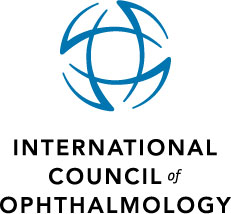Patient: 71 years of age, female, BCVA pre-operative 0.4; post-operative 0.4.
General Medical History: empty.
Ocular Medical History: in 03/2013 regular cataract surgery.
Main Complaint: in 05/2012 no visual rehabilitation after cataract surgery.
Methods: pre- and postoperativly colour photography, pachmetry, and corneal endothelial cell count (Rhinetec Sea Eagle Endothel).
Findings:
(1) Colour photography:
preoperative: no haze,
post-operative: haze and guttae (white arrows), border of rhexis (yellow arrows).
(2) Pachmetry
preoperative: 591µm
post-operative: 633µm
(3) Corneal endothelelial cell count.
preoperative: 969
post-operative: 963 cells/mm²
Discussion
Fuchs' corneal dystrophy - a dominantly inherited disorder - is a slowly progressive, bilateral corneal dystrophy that affects corneal endothelial cells.
Cataract surgery is a risk factor for corneal endothelial cell loss. Corneal endothelial cell loss, a major complication that sometimes occurs after cataract surgery, can lead to corneal edema and decompensation if cell density falls to 500 cells/mm2 or below. Yamazoe et al (1) reported that the mean rate of endothelial cell loss is about 12% ± 23%. Seitzman et al (2) reported a series of patients with Fuchs' dystrophy (136 eyes) undergoing cataract surgery. The average preoperative corneal thickness ranged from 482 to 674 µm. 37% had preoperative corneal thickness of 600 µm or thicker. Of eyes with preoperative pachymetry measurements of 600 µm or thicker, 10% progressed to penetrating keratoplasty. Patients with a preoperative corneal thickness of >640 μm had a 22.2% rate of requiring a corneal transplant. Their data suggest that current cataract removal techniques allow for excellent visual rehabilitation in patients with Fuchs' dystrophy who have a preoperative corneal thickness lower than 600 µm. They recommend a concurrent penetrating keratoplasty with cataract surgery in patients with Fuchs' dystrophy and a corneal thickness of >640 μm.
Literature
(1) Yamazoe K, Yamaguchi T, Hotta K, Satake Y, Konomi K, Den S, Shimazaki J. Outcomes of cataract surgery in eyes with a low corneal endothelial cell density. J Cataract Refract Surg. 2011 Dec;37(12):2130-6.
(2) Seitzman GD, Gottsch JD, Stark WJ. Cataract surgery in patients with Fuchs' corneal dystrophy: expanding recommendations for cataract surgery without simultaneous keratoplasty. Ophthalmology. 2005 Mar;112(3):441-6.
-------------------------- --------------------------
-------------------------- --------------------------
-------------------------- --------------------------
-------------------------- --------------------------
-------------------------- --------------------------
-------------------------- --------------------------





